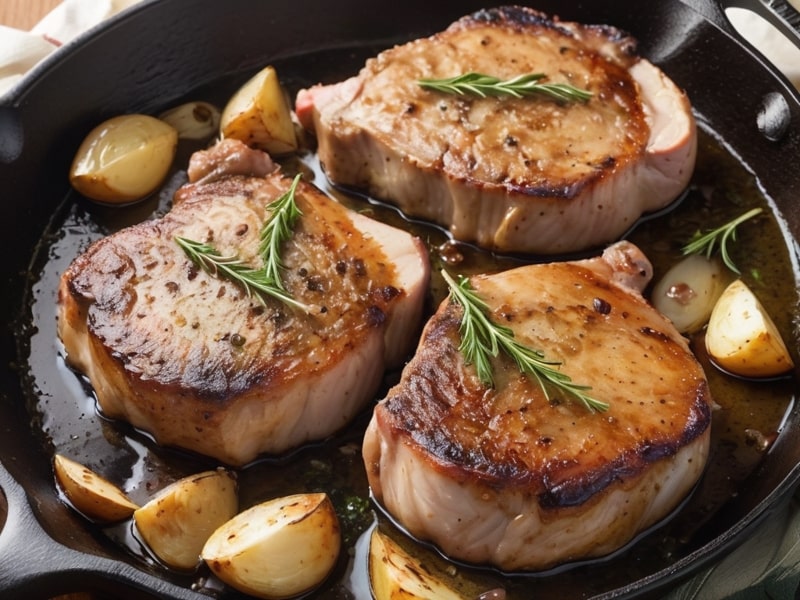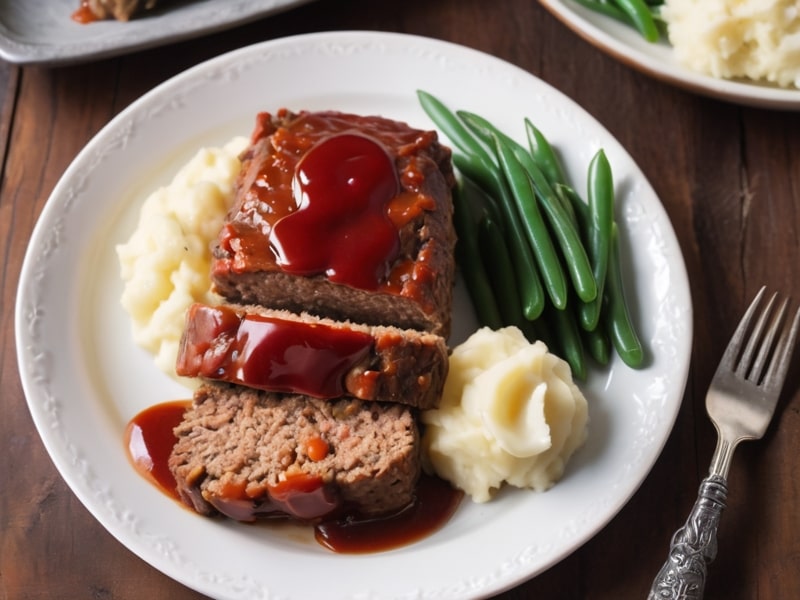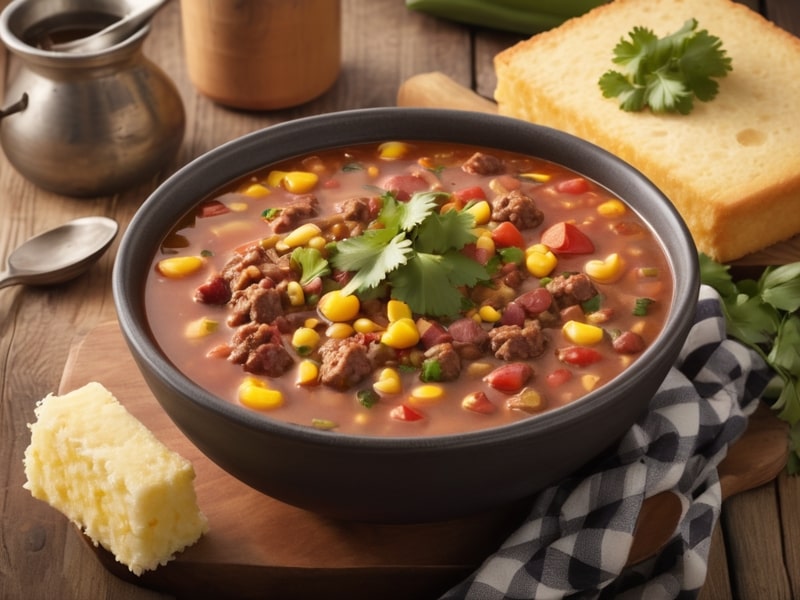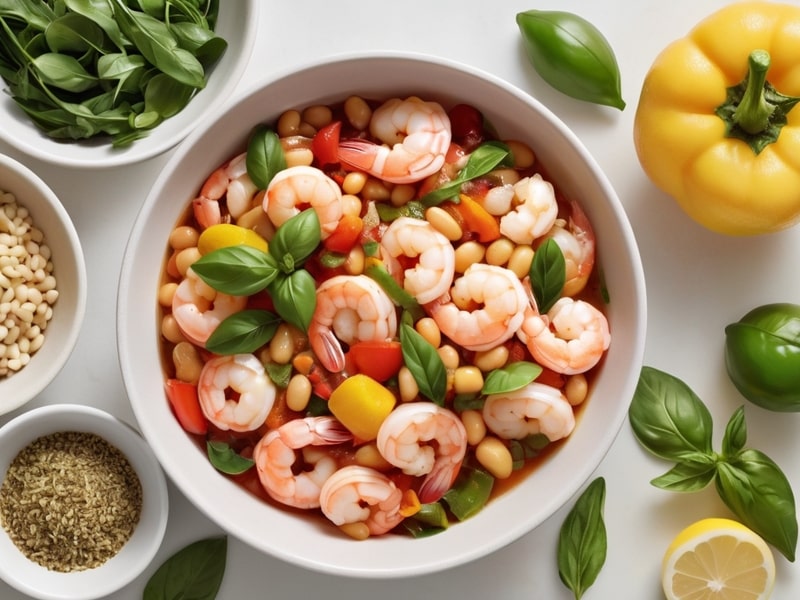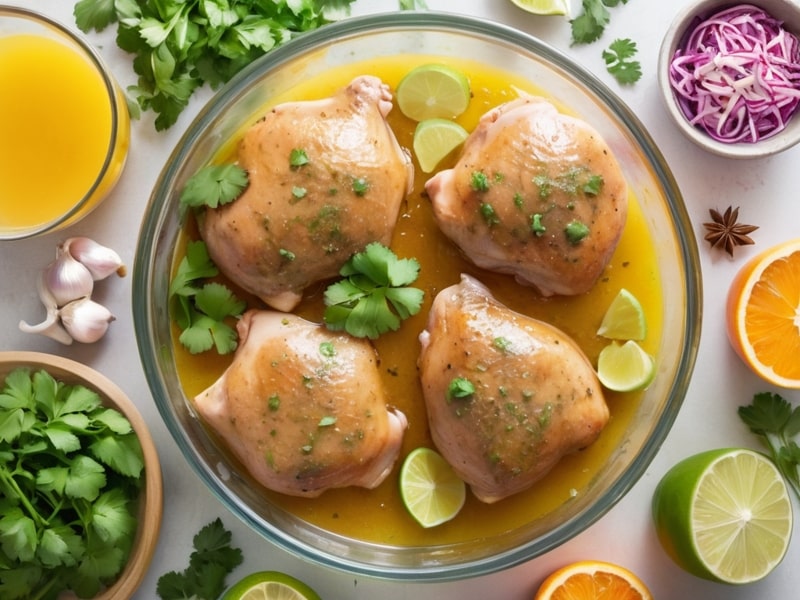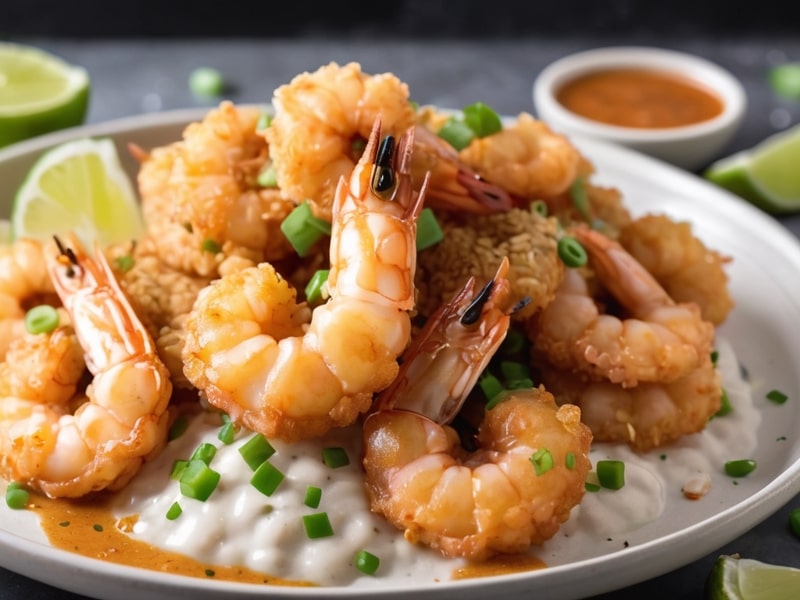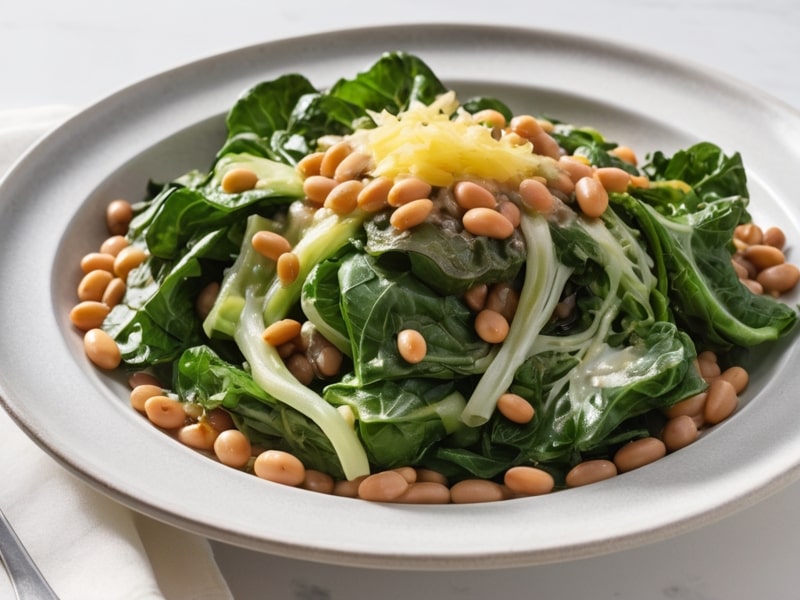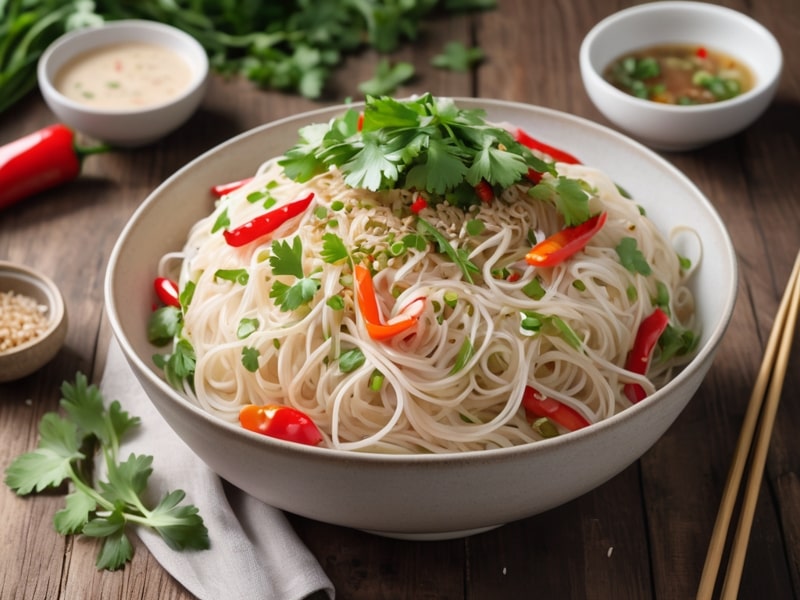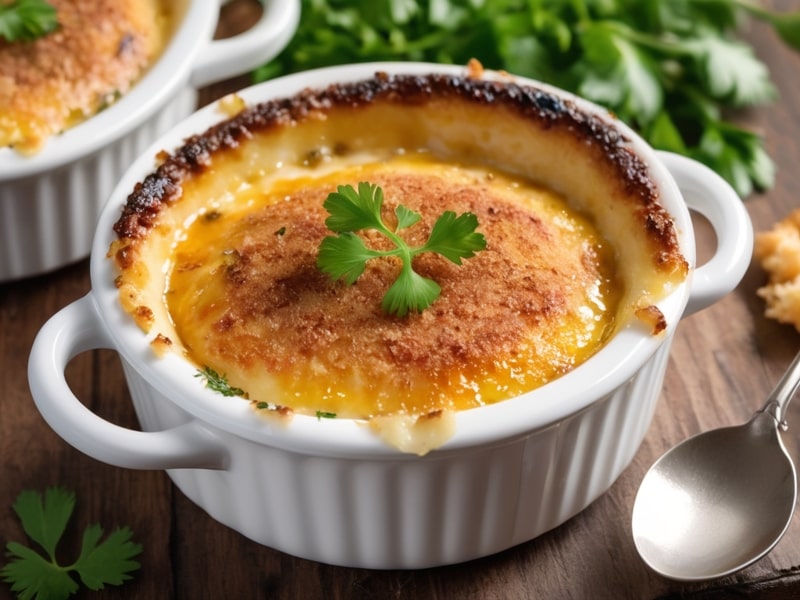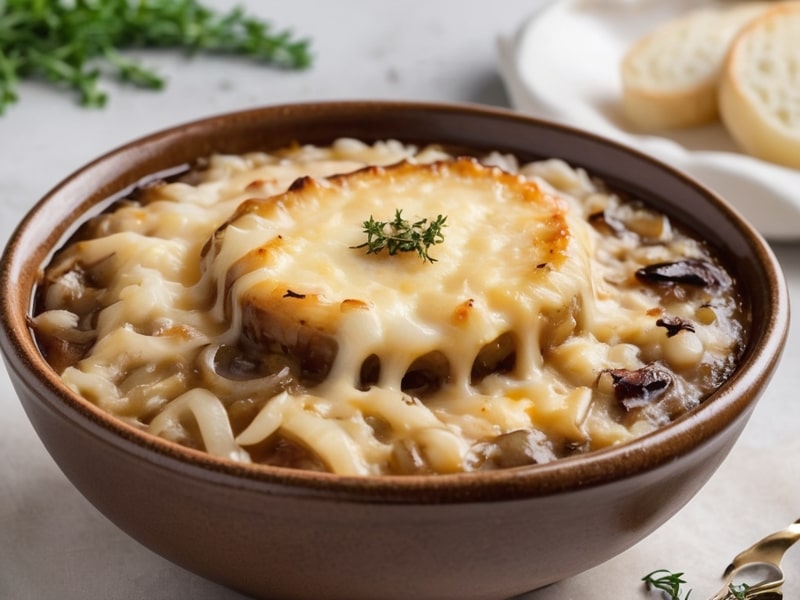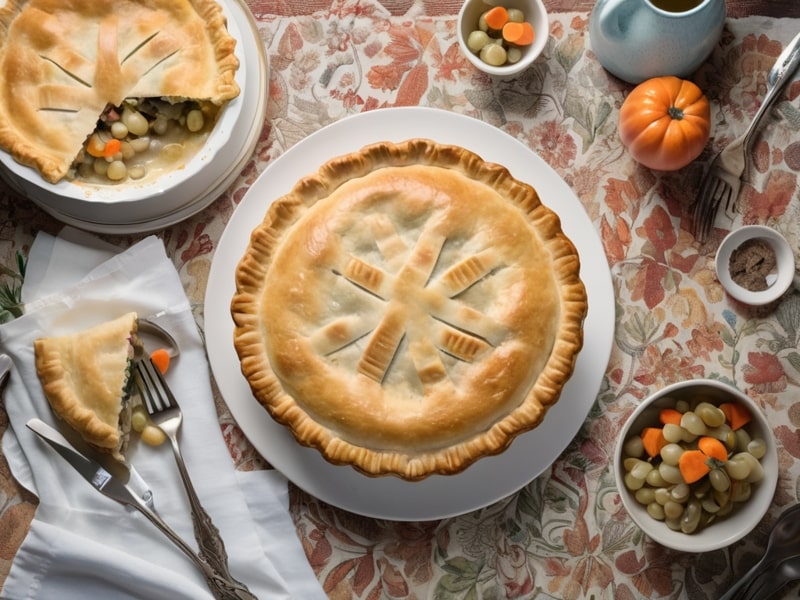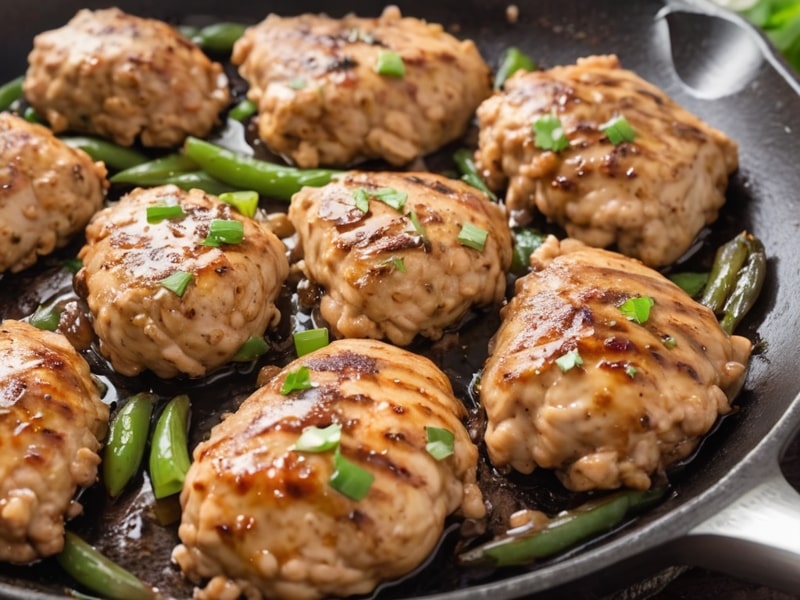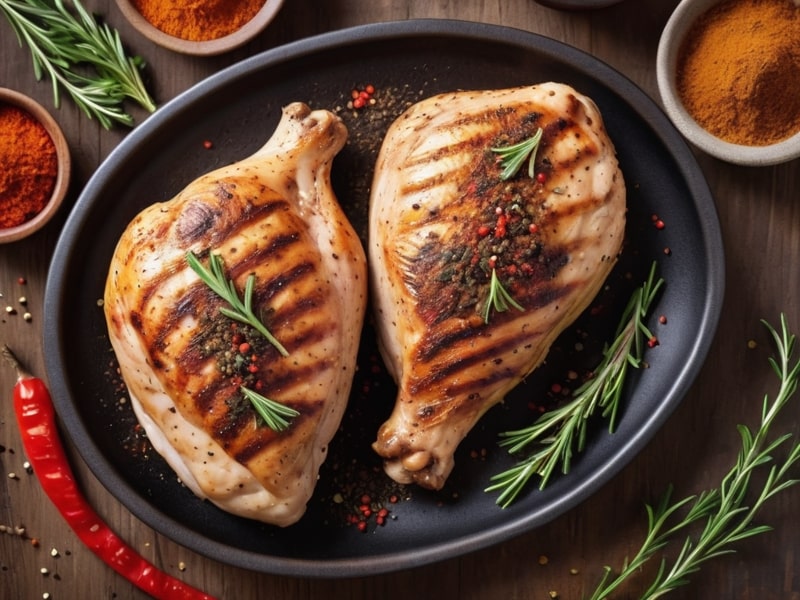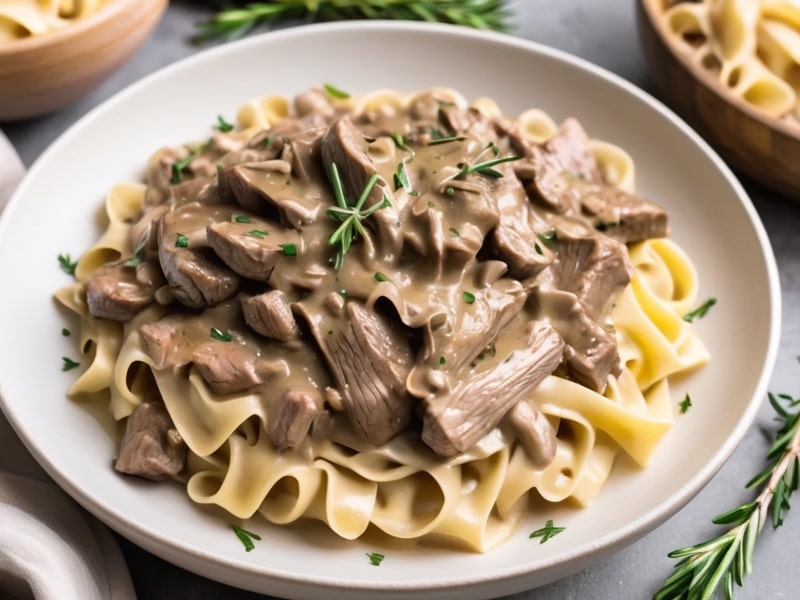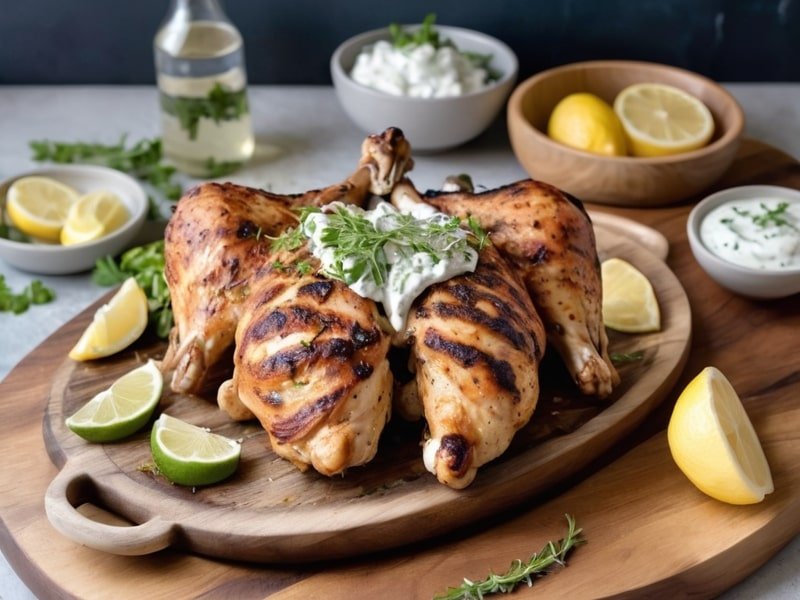Last updated on November 13th, 2024 at 11:17 am
Elevating Classic PorkChops with Applejack
Combining tradition with innovative flavor, this PorkChop Recipe with Applejack Glaze is a standout choice for those who appreciate the balance between sweet and savory flavors. Porkchops, known for their versatility, reach new culinary heights when enhanced with a glaze made from applejack—a classic American apple-based spirit. Not only does this dish offer a memorable dining experience, but it also taps into a deep-rooted culinary tradition with a modern twist, perfect for entertaining or an indulgent home-cooked meal.
A Brief History of Applejack in American Cuisine
Applejack holds a special place in American history, dating back to colonial times. Distilled from apples, it became a popular spirit in the 1600s and was often used in both beverages and cooking due to its rich, complex apple notes and availability. Traditionally produced through “freeze distillation” during the winter months, it was one of the earliest forms of distilled spirit in America, particularly beloved in New England. As an ingredient, applejack adds a uniquely American flavor profile to dishes, balancing the natural richness of pork and other meats.
This recipe honors the legacy of applejack, integrating its bold, fruity flavor to elevate classic porkchops into a restaurant-worthy meal.

PorkChop Recipe with Applejack Glaze
Equipment
- 1 Cast iron skillet Ideal for even searing and heat retention
- 1 Basting brush For evenly coating pork chops with glaze
- 1 Meat thermometer Ensures pork reaches safe cooking temp
- 1 Tongs To flip and handle pork chops
- 1 Small saucepan For preparing the applejack glaze
- 1 Mixing Bowl For brining solution, optional
Ingredients
Pork Chops and Brine (optional
- 4 Porkchops: Bone-in, about 1.5 inches thick
- 4 cups Water: For brine, optional
- 1/4 cup Kosher salt: For brine, optional
Applejack Glaze
- 1/2 cup Applejack: Quality applejack for best flavor
- 1/4 cup Brown sugar: Dark brown for richer flavor
- 1tbsp Dijon mustard: Adds depth to the glaze
- 2 tbsp Apple cider vinegar: Balances sweetness
- 1tsp Fresh rosemary: Chopped
- 1tsp Fresh thyme: Chopped
- 2tbsp Butter: For cooking and richness
Seasoning
- Salt To taste
- Black pepper Freshly ground
Instructions
Optional Brining (Highly Recommended)
- In a mixing bowl, combine 4 cups water with 1/4 cup kosher salt. Add porkchops and let sit for 1 hour. Remove chops, pat dry with a paper towel, and set aside.
Season the PorkChops
- Sprinkle both sides of each porkchop generously with salt and freshly ground black pepper.
Prepare the Applejack Glaze
- In a small saucepan, combine 1/2 cup applejack, 1/4 cup brown sugar, 1 tbsp Dijon mustard, and 2 tbsp apple cider vinegar. Add fresh rosemary and thyme.
- Heat over medium until the mixture begins to simmer. Let it reduce, stirring occasionally until it thickens to a syrupy consistency. Remove from heat and set aside.
Sear the PorkChops
- Heat a cast-iron skillet over medium-high heat with 1 tbsp butter. Place the porkchops in the skillet and sear for about 4 minutes per side, or until they develop a golden-brown crust.
Apply the Glaze and Finish Cooking
- Brush a layer of applejack glaze over each pork chop. Flip the chops, brush the other side, and continue cooking for an additional 2 minutes on each side, basting with more glaze as they cook. The internal temperature should reach 145°F.
Rest the Pork Chops
- Remove from heat and let the pork chops rest for 5 minutes to allow the juices to settle.
Serve and Enjoy
- Plate each porkchop with a final spoonful of the remaining glaze. Pair with suggested sides like garlic mashed sweet potatoes, caramelized apples, or sautéed spinach.
Notes
- Use a meat thermometer to ensure the pork is cooked to the correct internal temperature, avoiding overcooking and dryness.
- If you prefer a non-alcoholic glaze, substitute applejack with apple juice and a splash of extra apple cider vinegar.
Perfect Side Dishes to Complement PorkChops with Applejack Glaze

For a balanced, visually appealing plate, consider these side dishes:
Caramelized Apples and Onions
Caramelizing apple slices with onions and a touch of butter enhances the dish’s apple notes. These pair beautifully with the applejack glaze and add an extra layer of flavor.
Garlic Mashed Sweet Potatoes
The natural sweetness of sweet potatoes brings out the glaze’s caramel notes, and the garlic adds a savory depth that complements the pork.
Sautéed Spinach with Garlic
A fresh, light side that balances the rich flavors, sautéed spinach adds a vibrant green color and works well with the sweetness of the glaze.
Expert Tips for Cooking with Applejack
- Use in Moderation: Applejack is potent, so a little goes a long way. Too much can overpower the dish’s balance.
- Combine with Acidity: Applejack’s natural sweetness pairs best with an acidic component, such as apple cider vinegar, to keep the flavors balanced.
- Enhance with Fresh Herbs: Fresh rosemary, thyme, or sage can add complexity to applejack dishes, especially in savory applications like this glaze.
For an easy and delicious side dish to elevate any outdoor meal, check out our guide to Campfire Carrots in Foil. These tender, flavorful carrots are seasoned and cooked to perfection over a campfire, capturing the essence of outdoor cooking with minimal prep. Visit our Campfire Carrots recipe for step-by-step instructions and tips to make this a standout dish for your next camping adventure!
Plating Tips for a Gourmet Presentation
When plating your porkchops with applejack glaze, presentation can make a big impact. Here’s how to elevate the visual appeal:
- Arrange Side Dishes Artfully: Place mashed sweet potatoes or vegetables in a small mound next to the porkchop, creating a colorful contrast.
- Drizzle with Extra Glaze: A final drizzle of the applejack glaze across the chop and plate adds a glossy, appetizing finish.
- Herb Garnish: A small sprig of rosemary or thyme on top of the porkchop adds a pop of color and enhances the dish’s aroma.
Advanced Cooking Techniques for Texture and Flavor
To make your pork chops with applejack even more professional, consider these techniques:
- Reverse Searing: Start by cooking the pork chops slowly in an oven at 275°F until they reach an internal temperature of 125°F, then finish with a hot sear in the skillet for a crusty exterior.
- Brining for Juiciness: A brine with salt, sugar, and aromatics (like bay leaves and peppercorns) before cooking can result in more flavorful, tender chops.
Dessert Pairing Suggestions for a Cohesive Meal
Pairing a dessert with the flavors of pork and applejack can complete the meal beautifully:
- Apple Tart: A light apple tart with a touch of cinnamon is an excellent way to end the meal, echoing the flavors of the applejack glaze.
- Vanilla Bean Panna Cotta with Caramel Sauce: The smooth panna cotta balances the richness of the pork, while caramel sauce ties in the applejack’s sweetness.
- Spiced Pear Crumble: Another fall-inspired dessert, this pear crumble is slightly tart and complements the sweet glaze.
Storage and Reheating Tips for Leftovers

Storing and reheating pork chops while maintaining flavor and moisture can be tricky. Here’s how to do it:
- Storing Leftovers: Keep leftovers in an airtight container for up to three days in the refrigerator.
- Reheating: Reheat pork chops in the oven at 300°F, covered with foil to prevent drying. Add a splash of broth or apple cider for added moisture.
- Freezing Tips: For longer storage, freeze the pork chops and glaze separately. Thaw overnight in the refrigerator before reheating.
For a flavorful twist on pork chops, try this Pork Chop with Applejack Cream and Caramelized Apples recipe from Back to Organic. This dish combines the rich taste of tender pork with the sweetness of caramelized apples and a creamy Applejack sauce, creating a delicious balance of savory and sweet. Discover the full recipe and step-by-step instructions on Back to Organic to make this dish a standout in your kitchen!
Nutrition Information and Health Benefits
This PorkChop Recipe with Applejack Glaze offers a balanced meal with protein, vitamins, and essential minerals:
- Protein: Pork is a rich source of protein, essential for muscle health.
- Vitamin B Complex: Pork is high in B vitamins, which support energy metabolism and red blood cell formation.
- Antioxidants: Applejack and apple cider vinegar contain antioxidants that support heart health.
Nutritional Breakdown (Per Serving):
- Calories: 520 kcal
- Protein: 37g
- Carbohydrates: 20g
- Fat: 27g
- Sugar: 12g
- Fiber: 2g
Final Thoughts: Why PorkChops with Applejack Glaze Deserve a Spot on Your Dinner Table
This PorkChop Recipe with Applejack Glaze brings together time-honored flavors with modern culinary techniques, delivering a meal that feels both classic and inventive. The rich, sweet applejack glaze enhances the natural flavors of the pork, creating a delightful balance of sweetness, acidity, and savory notes. Paired with thoughtfully chosen side dishes and a great wine, this recipe is sure to impress your family and friends.
This recipe doesn’t just offer a delicious meal—it provides a culinary journey, connecting the present with the rich heritage of American cuisine. Whether you’re a seasoned chef or a home cook, this dish is both approachable and rewarding, making it a must-try for any occasion. Enjoy every juicy, flavorful bite!
FAQs About PorkChop with Applejack
1. Can I substitute applejack with another spirit?
Yes, bourbon or apple brandy can be used in place of applejack. Both add unique flavors, with bourbon offering a smokier finish and apple brandy delivering similar fruitiness.
2. What is the best way to reheat porkchops?
To prevent dryness, reheat porkchops on the stovetop over low heat, adding a splash of apple cider to keep them moist. Alternatively, use the oven at 300°F for about 10–15 minutes, covering with foil.
3. Is there a way to make the glaze without alcohol?
For a non-alcoholic version, use apple juice with a splash of apple cider vinegar and a tablespoon of brown sugar for a similar flavor.
4. How long should I let the pork rest?
Allowing the pork to rest for 5 minutes after cooking helps the juices redistribute, ensuring each bite is tender and flavorful.
5. What is the best method to check the internal temperature?
A meat thermometer is the most accurate tool for checking the internal temperature. Insert it into the thickest part of the pork chop to ensure perfect results.

